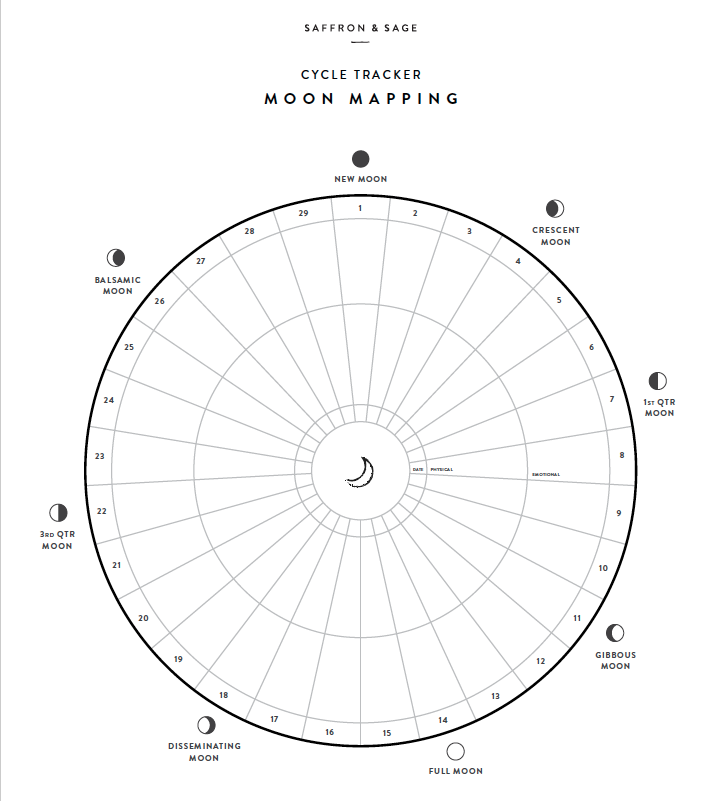Moon Cycle Mapping
WHY DO WE MOON MAP?
Whether we are in or beyond our menstruating years, moon mapping allows us to begin a deep journey into ourselves. It is a re-awakening of the ancient lunar rhythms expressed outside of us and living within us. It is a deep connection with a universal pattern of ancient origin.
Charting your personal lunar cycle will unveil your unique lunar rhythm as a gateway to cultivating a more empowered relationship with your body.
After practicing moon mapping consistently, you will begin to see patterns that perhaps you were never aware of—mental, physical, emotional, sexual, and intuitive—informing you of how to attune to your fertility and anchor yourself in the rhythm of your feminine power.
Moon mapping is more than balancing your menstrual flow. It is valuable information that can be used to design your life in a way that supports your personal phases and flow, leading to a more dynamic and balanced existence.
HOW DO YOU MOON MAP?
There are 29 spaces representing the days of the lunar cycle plus illustrations of the moon as it changes from New to Full. The black moon stands for the New Moon. The white one is the Full Moon.
Before you start mapping, you should know what phase of the moon correlates with the first day (day 1) of your cycle. Day 1 is when you start bleeding. On your Day 1, identify when the New or Full Moon is happening and work back from there.
For example: If you start bleeding two days before the New Moon starting writing your data two spaces before the New Moon (on the spaced marked 28). Fill in the date and label that it is Day 1 of your cycle.
If your cycle has more than 29 days, use more than one Moon Map! We recommend you carry out this study for at least 3 months. After 3 months, compare the maps and find the patterns!
Record the the day number of your cycle in the smallest inner circle labeled “Cycle Day”.
The dates corresponding to them are written in the areas called “Date”.
The area called “Physical” is where you document the changes that happen in your body – for example, breasts are bigger, characteristics of vaginal mucus, sensitive nipples, straining, diarrhea, thirst, tiredness or vitality, cramps, gases, lack or excess of sleep, oily or dry hair and skin, muscle pains, acne, amount of menstrual flow, etc.
The area called “Emotional” is where you take note of the changes that happen in your emotional level – irritability, extroversion, introversion, receptivity, passivity, determination, euphoria, creativity, protector, caring, anxious, stressed, etc.
You can also compliment the information like: dreams, libido, which food cravings or aversions you have, if you have less or more appetite, quality and amount of sleeping, etc.
The space with the moon cycle numbers (1-29) can be colored in red during the days of bleeding and in some specific color to make reference to possible fertile days. Fertility control doesn’t happen in a linear way, just based upon dates, but by being aware of the characteristics, physical/emotional patterns that may occur during the cycle; that is, through self-study, observation and awareness of one’s own patterns.
Understand that this moon map is your blank slate! You can make it your own by mapping your personal data and adding your own artistic flair!
Ready to map your cycle?
We have created our own Saffron & Sage moon map to help you on your journey!


